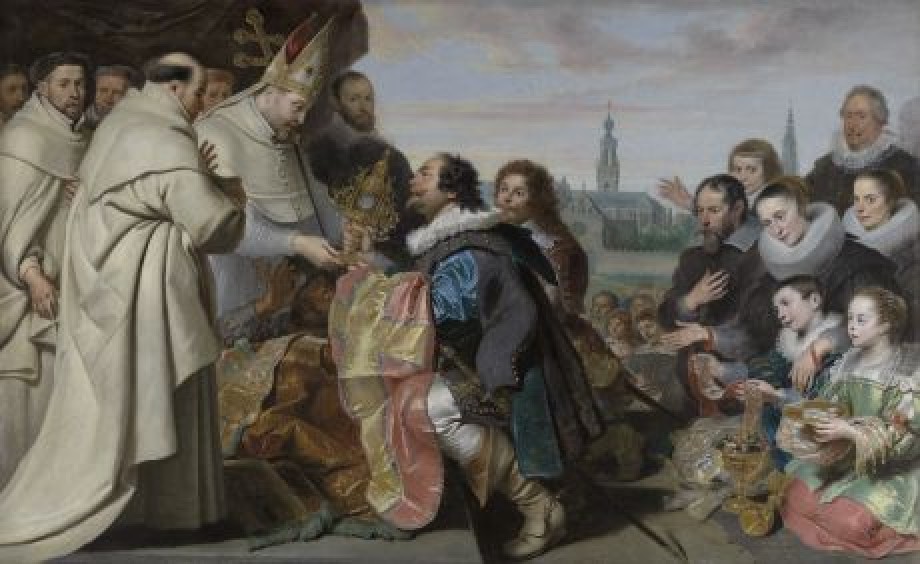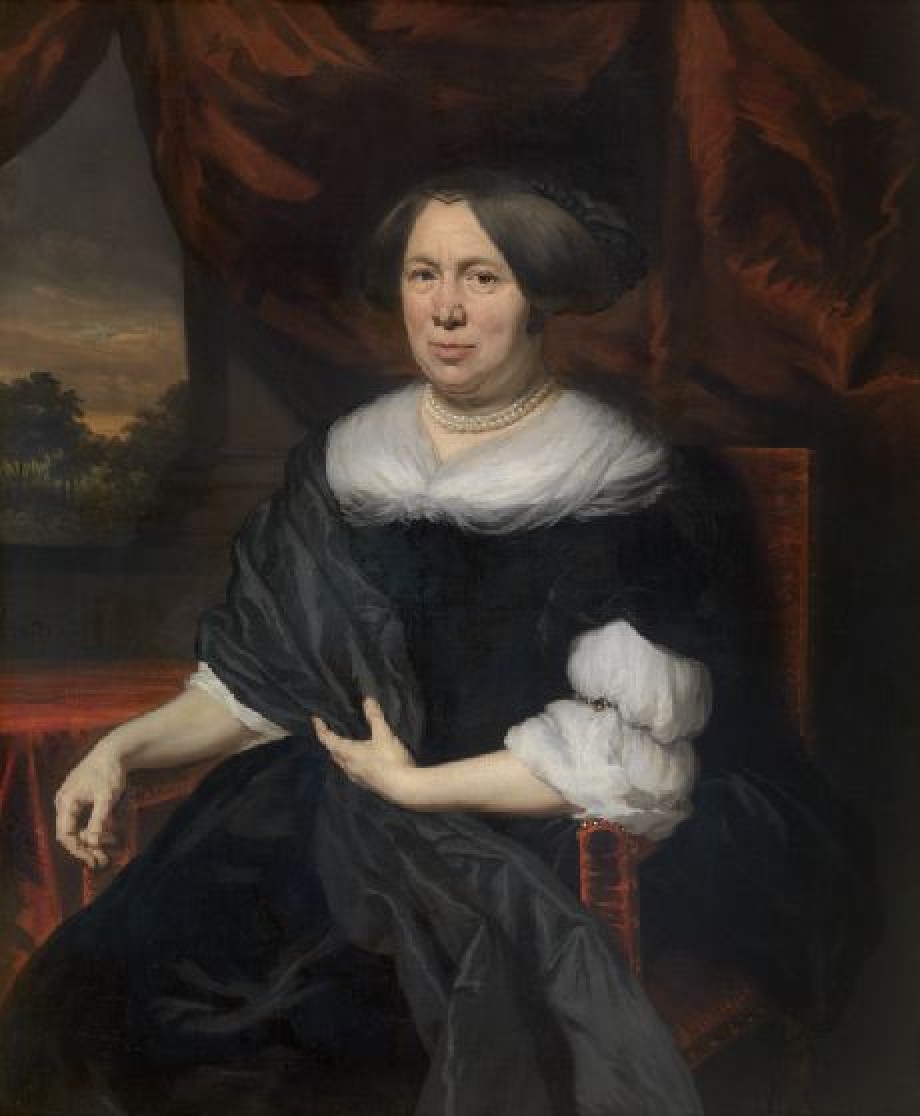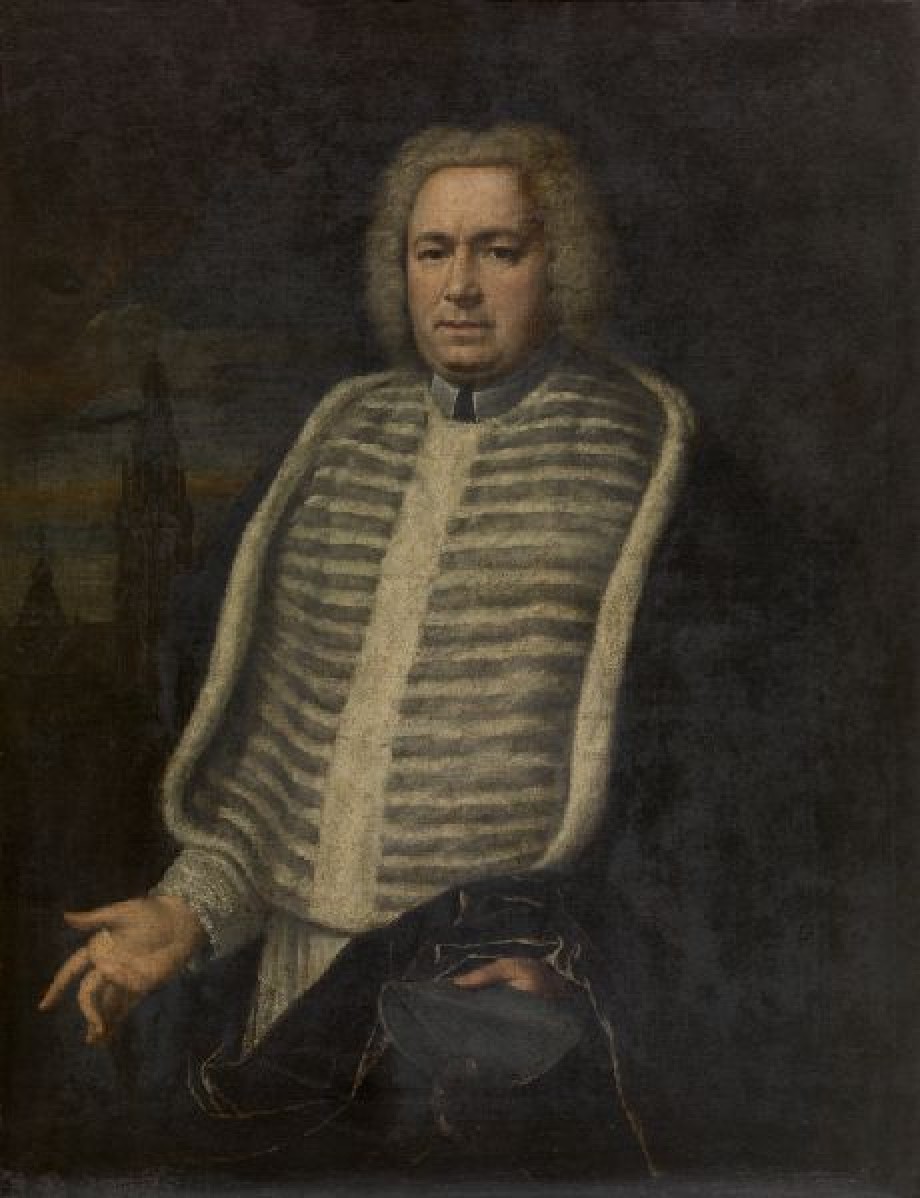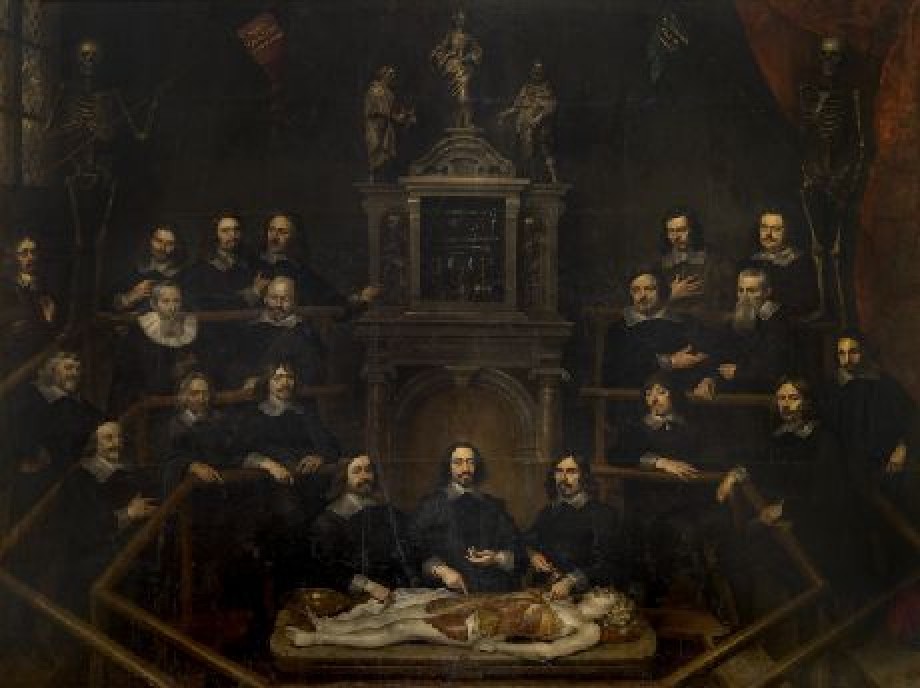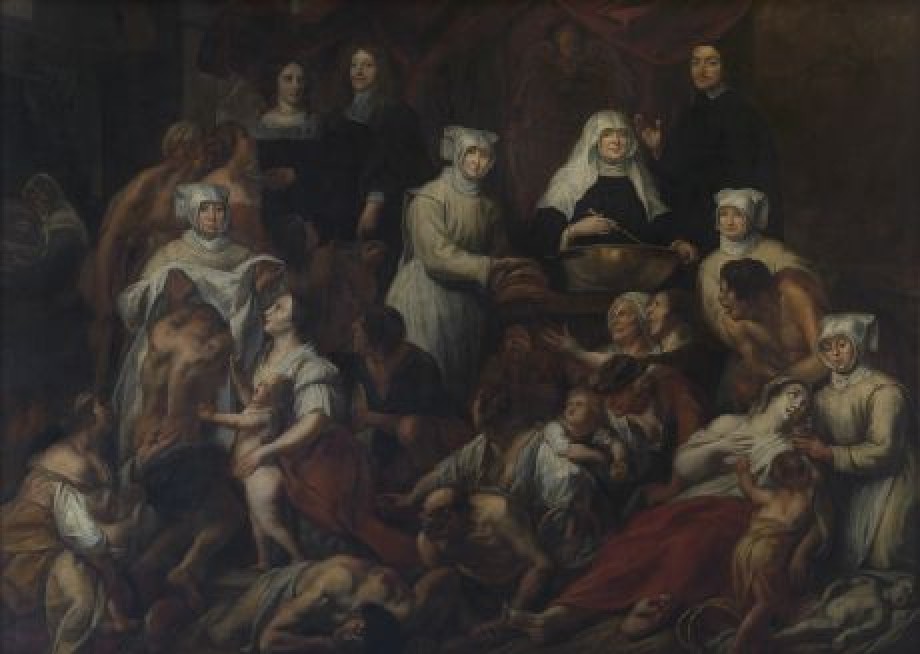Vanitas Portrait of the Painter

Artist / maker
Antonie van Steenwinckel (painter)Date
(1678-1685)Period
17 centuryCollection
Royal Museum of Fine Arts Antwerp
A mirror reflects what is probably the self-portrait of the painter Antonie van Steenwinckel. He is a distinguished man and is looking out at the viewer. His distinctive features are drooping eyelids, a wide, protruding nose and a neatly trimmed moustache and beard. He is wearing a dark grey cloak and a high collar with white lace. On his blond…
Read more
A mirror reflects what is probably the self-portrait of the painter Antonie van Steenwinckel. He is a distinguished man and is looking out at the viewer. His distinctive features are drooping eyelids, a wide, protruding nose and a neatly trimmed moustache and beard. He is wearing a dark grey cloak and a high collar with white lace. On his blond locks he has a large hat with a high brim. An hourglass, two books and a skull are displayed on a wooden table with an open, empty drawer. The objects are reflected in the black-framed mirror that a young man is holding up by the sides. He, too, is looking at the viewer.
This painting combines a self-portrait with a vanitas scene, both of which allude to the brevity of life. Van Steenwinckel leaves no doubt about the relativity of his mirror image. He shows himself to be content and self-assured. But the hourglass, book and skull in the foreground remind us and the artist that the time, life and fame that people can enjoy on earth do not last forever.
The Danish-Latin inscriptions Steenwinkel og hústrú / Ipse pinxit in the top left corner were painted over the craquelure, probably only after the artist’s death. They state that Van Steenwinckel had painted himself with his wife, but the large fingers around the frame of the mirror appear to be a man’s and not a woman’s, and the face with the short haircut look like that of a youth. Is this a young man, possibly a painter’s assistant? Or maybe we are looking at a younger version of Van Steenwinckel himself. If he did indeed paint himself as a young man holding up a mirror image of himself at a later age, then that would reinforce the idea of a vanitas. The painter is looking back on his youth, is displaying the present while referring to the inevitability of death through the symbols of transience. At the same time, though, it proves that painting can overcome time, because by portraying himself Van Steenwinckel is making time stand still and preserving his likeness for posterity.
By structuring the scene in planes receding into depth Van Steenwinckel is raising interesting questions about reality and illusion in art. At first sight the open drawer and the books extending over the front of the table create the impression that this is a real table with tangible objects, a so-called trompe-l’oeil. Beyond it there is the flat surface of the mirror, but instead of seeing ourselves we are seeing the painter’s face. So he is standing in for us, while we in reality are on his spot. That effect is reinforced by the fact that Van Steenwinckel does not have any attributes signalling that he is at work, as is so often the case with self-portraits of painters. The third level is formed by the figure at the back, who is both literally and figuratively holding up a mirror to the painter as well as to us.
The scene is tightly framed. The canvas must originally have been larger but has been trimmed on all sides. In an 18th-century copy in Det Nationalhistorisk Museum, Frederiksborg Slot, Hillerød, inv. no. A903, the mirror and the figure behind the table are not cut off by the edges of the picture.
Antonie van Steenwinckel came from a family of Flemish artists that played an important role in the artistic activity of the Danish court in the 16th and 17th centuries. He himself was appointed court painter in 1681. Van Steenwinckel mainly painted history scenes and portraits which have strong contrasts of light and dark passages, as they do in this work.
Read less
